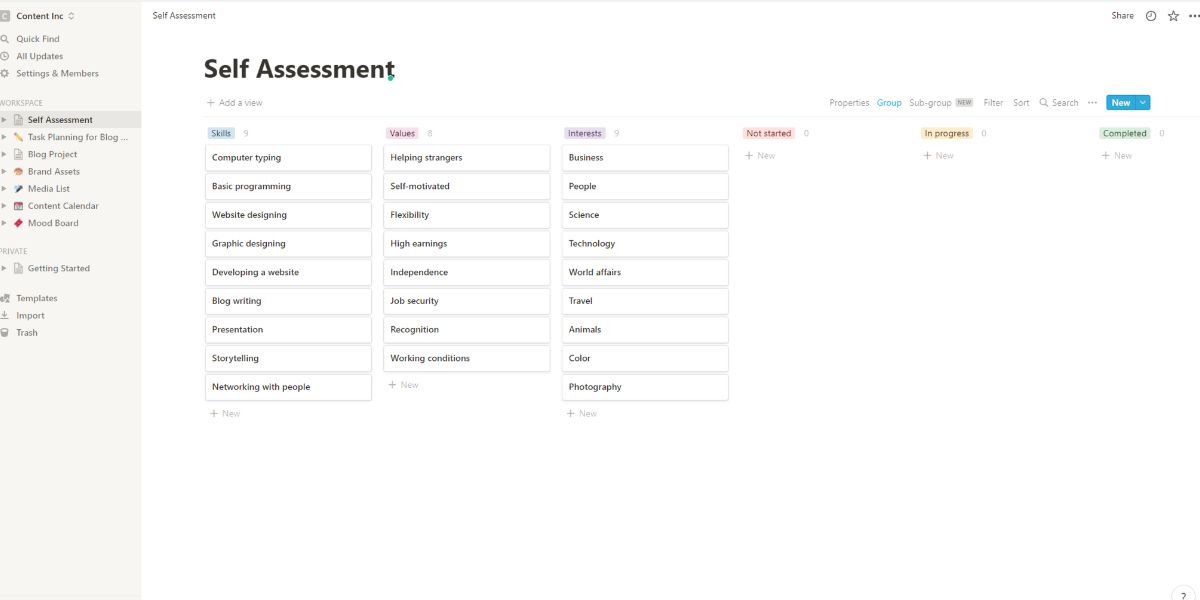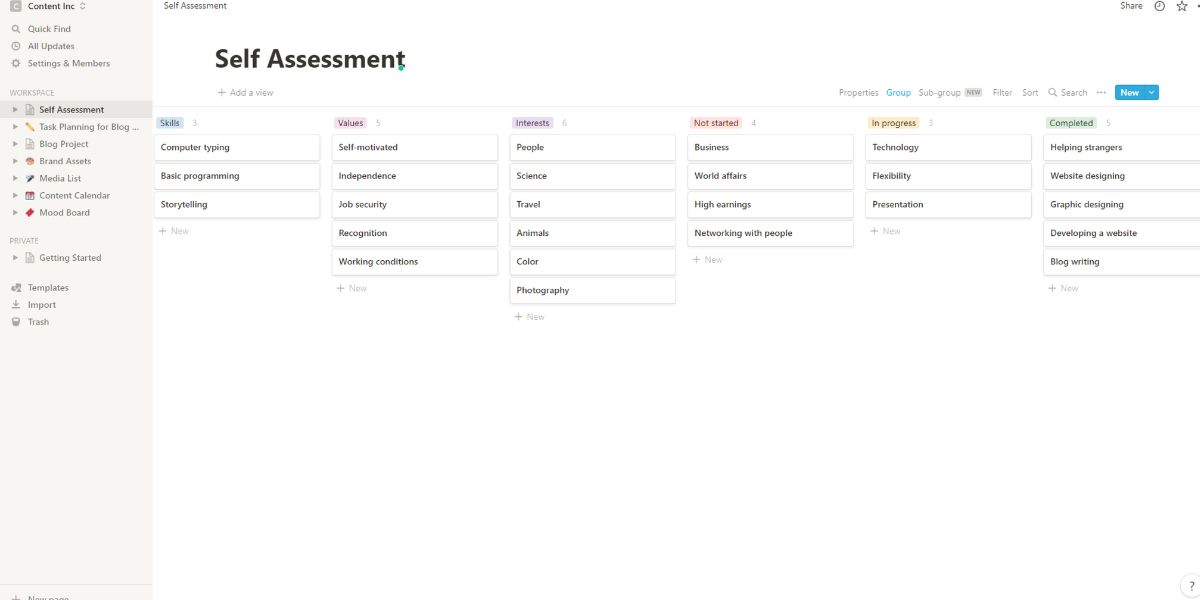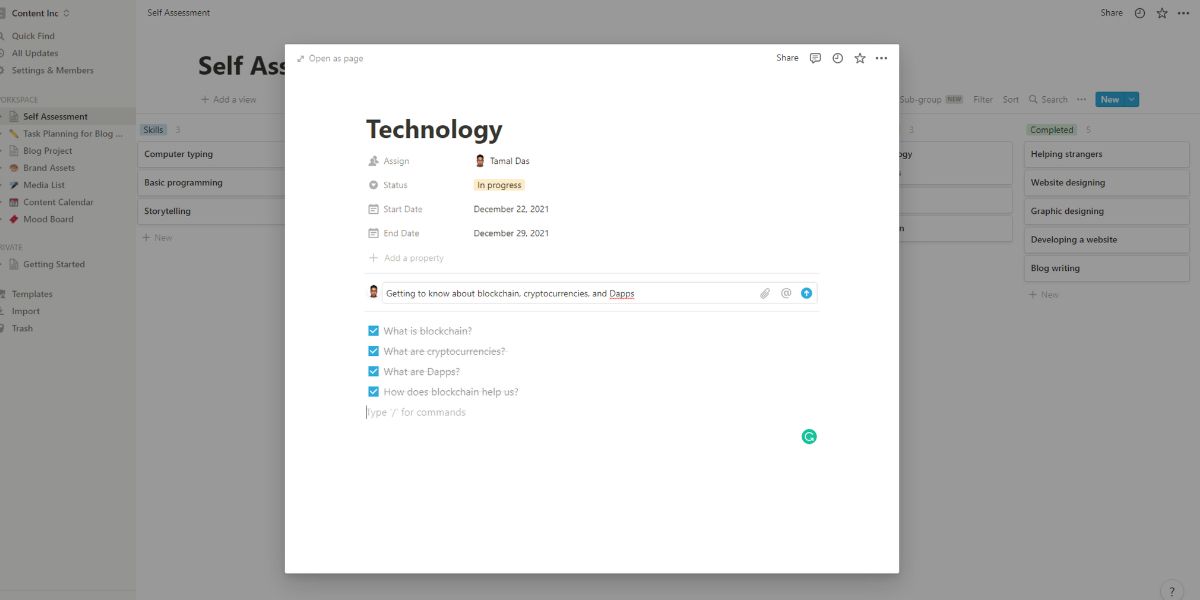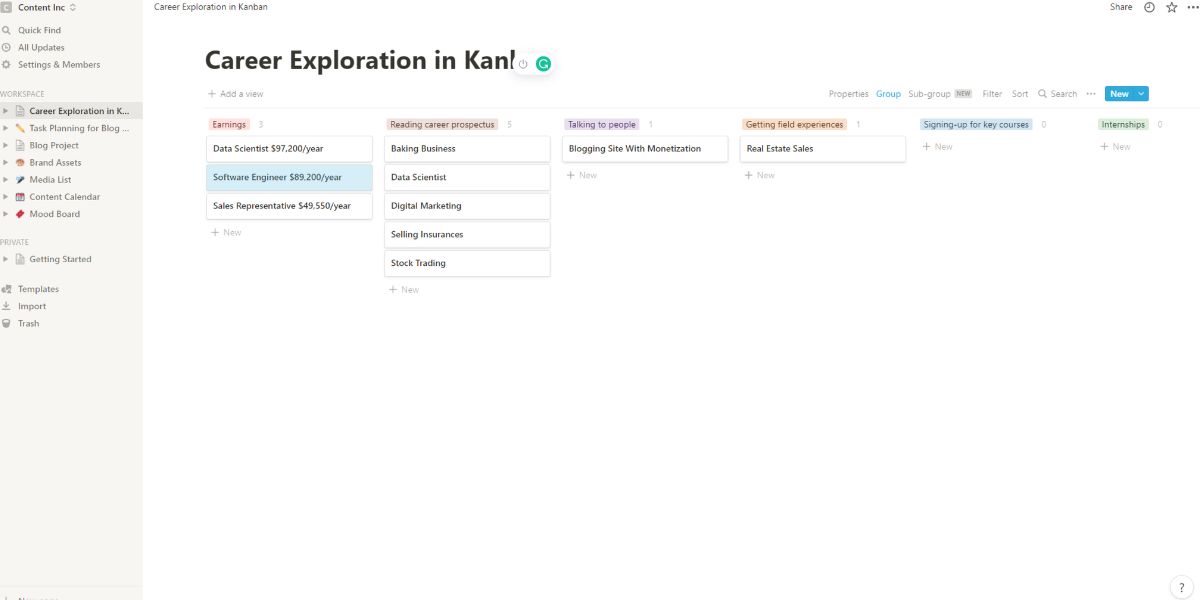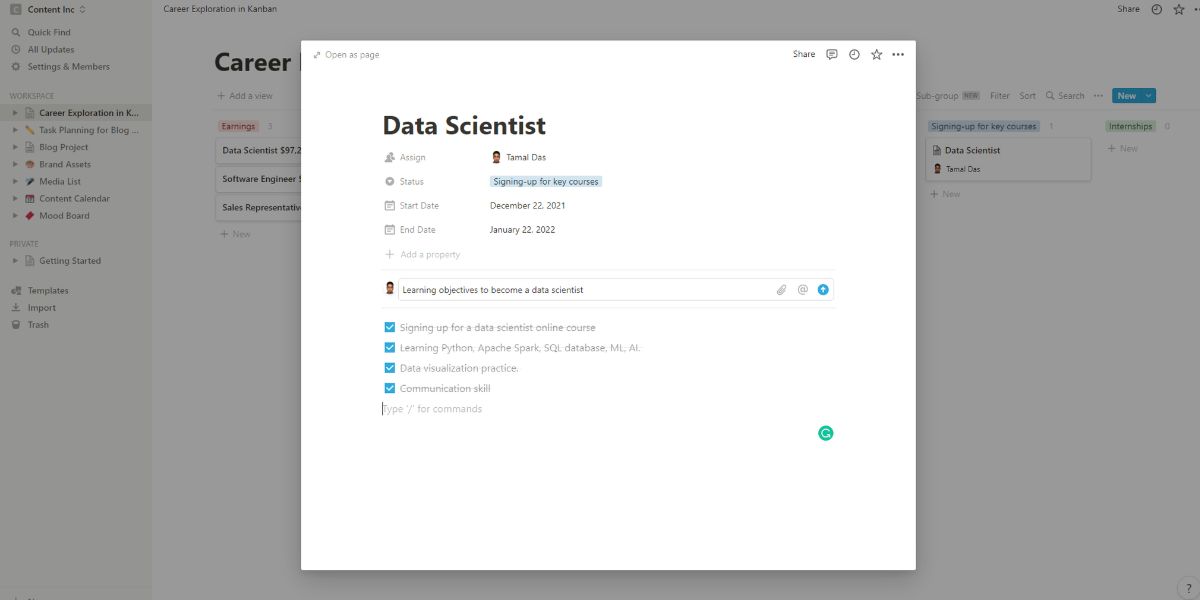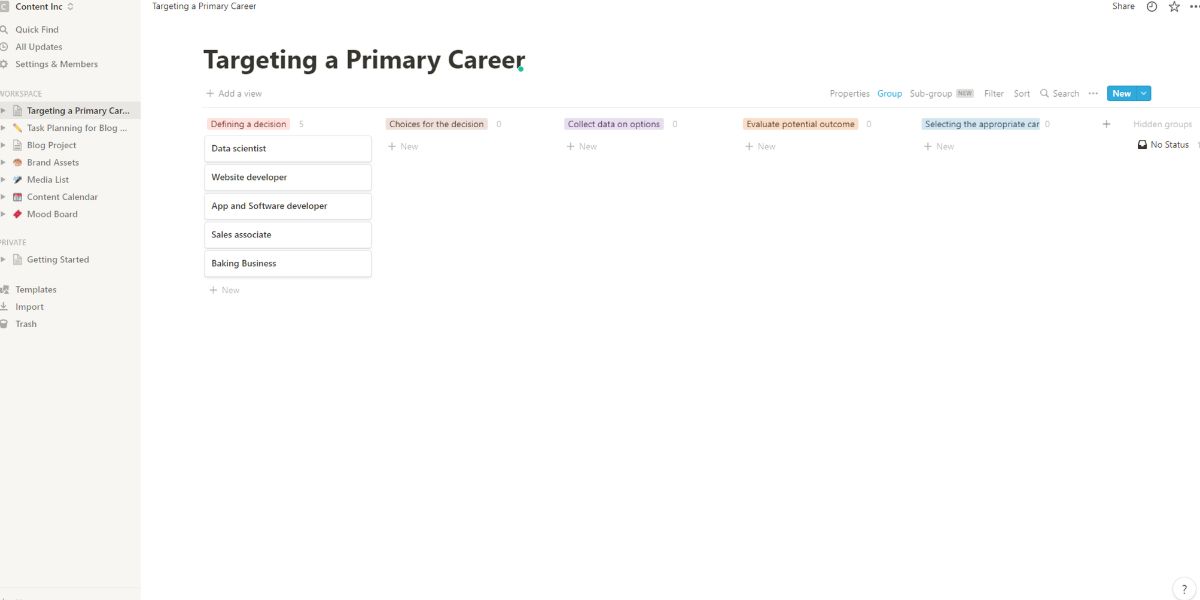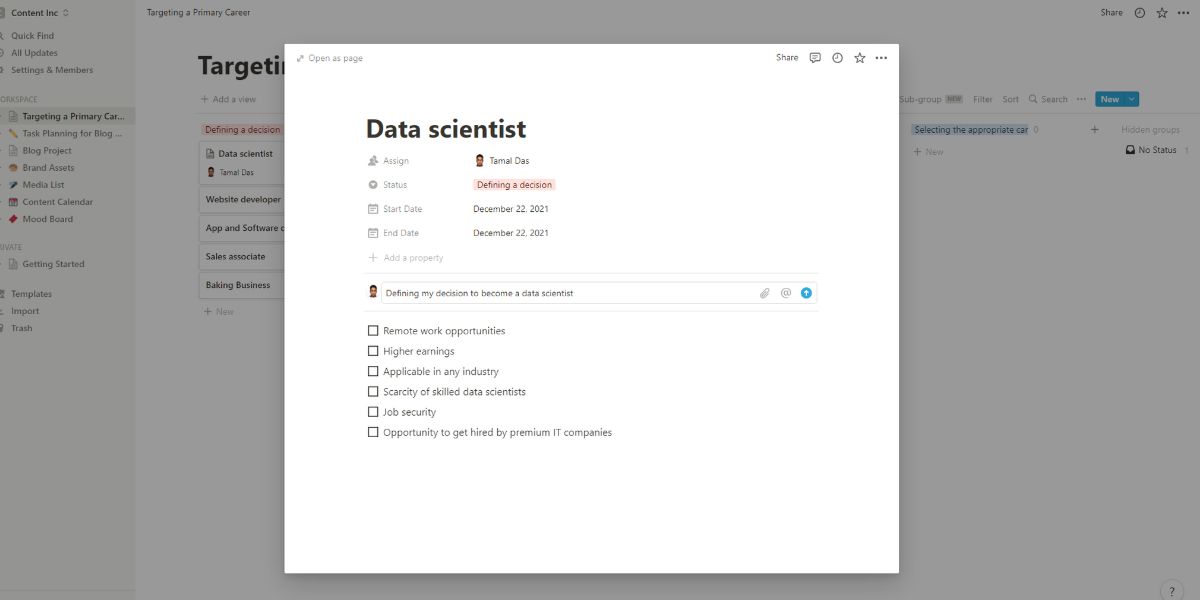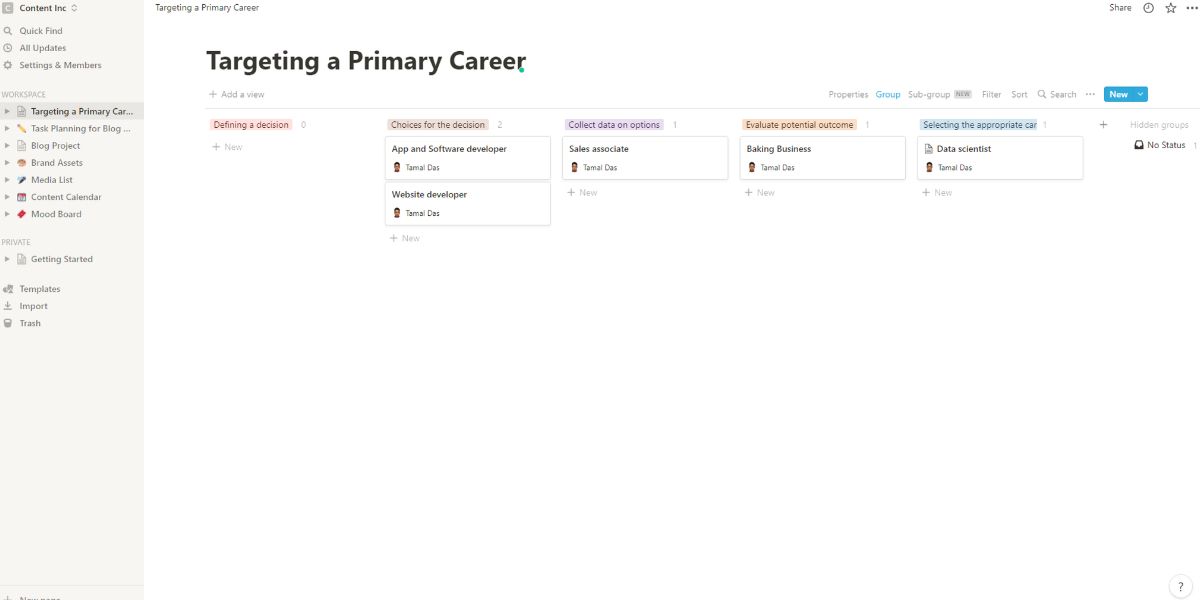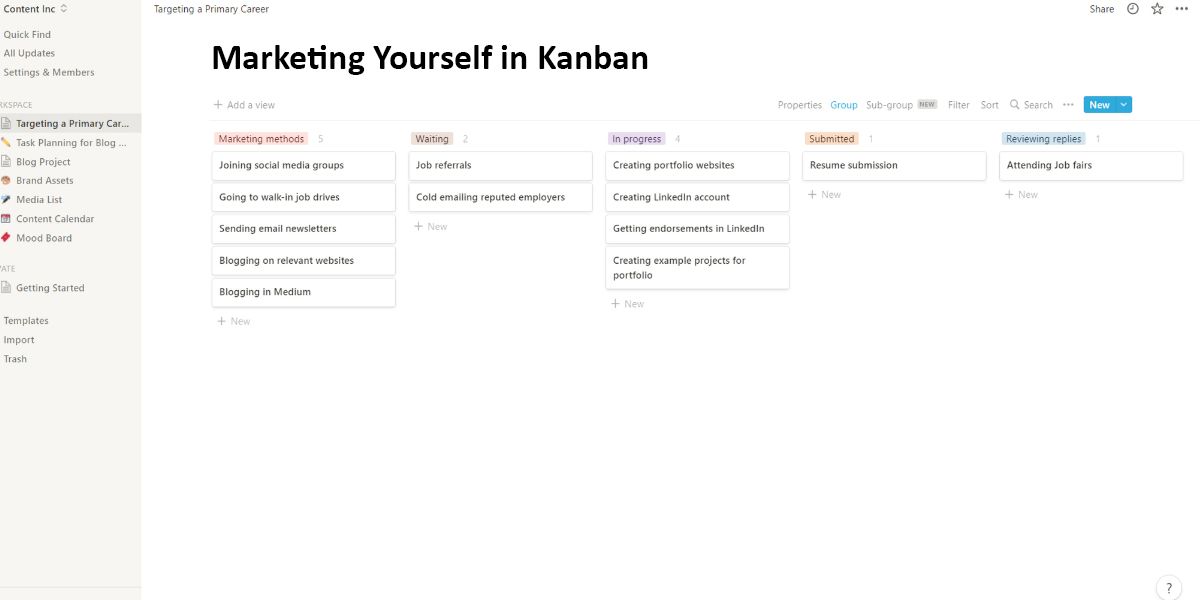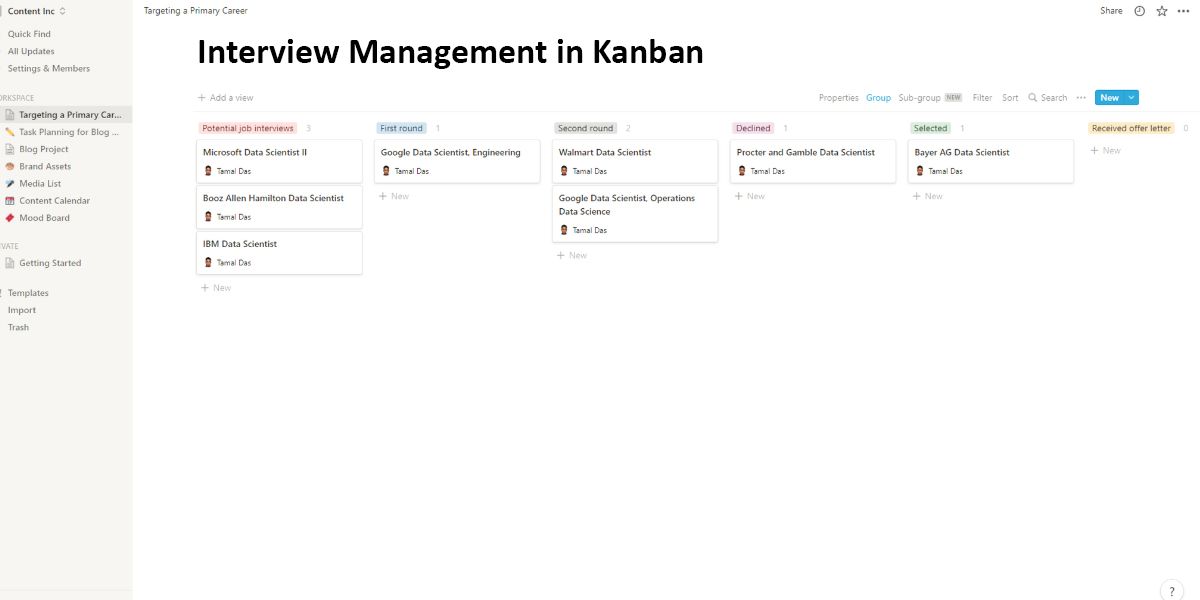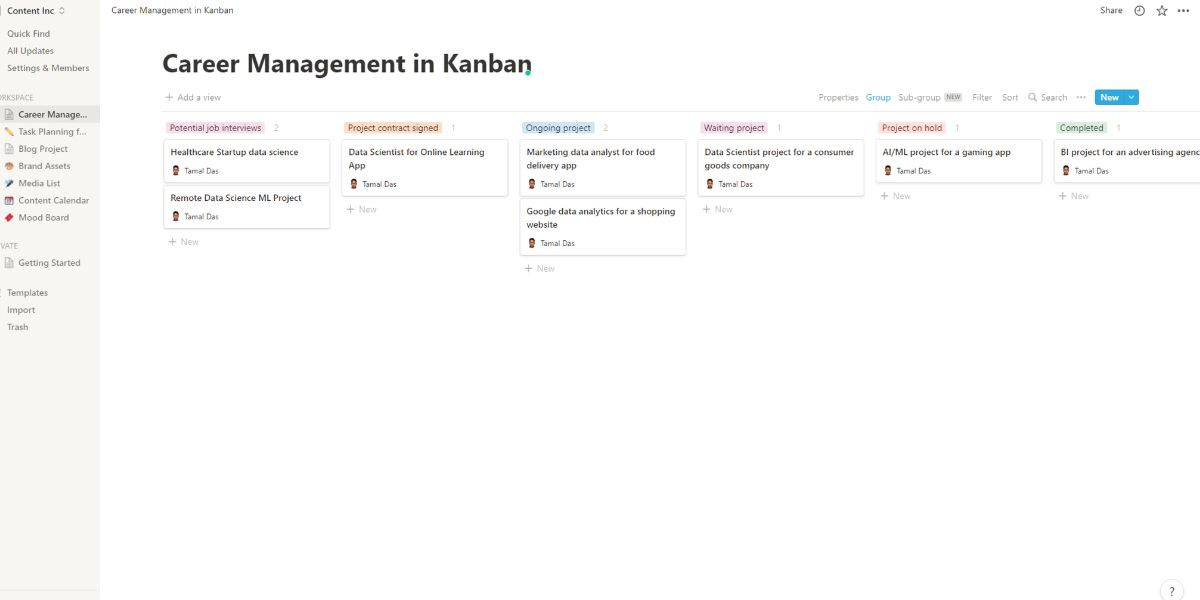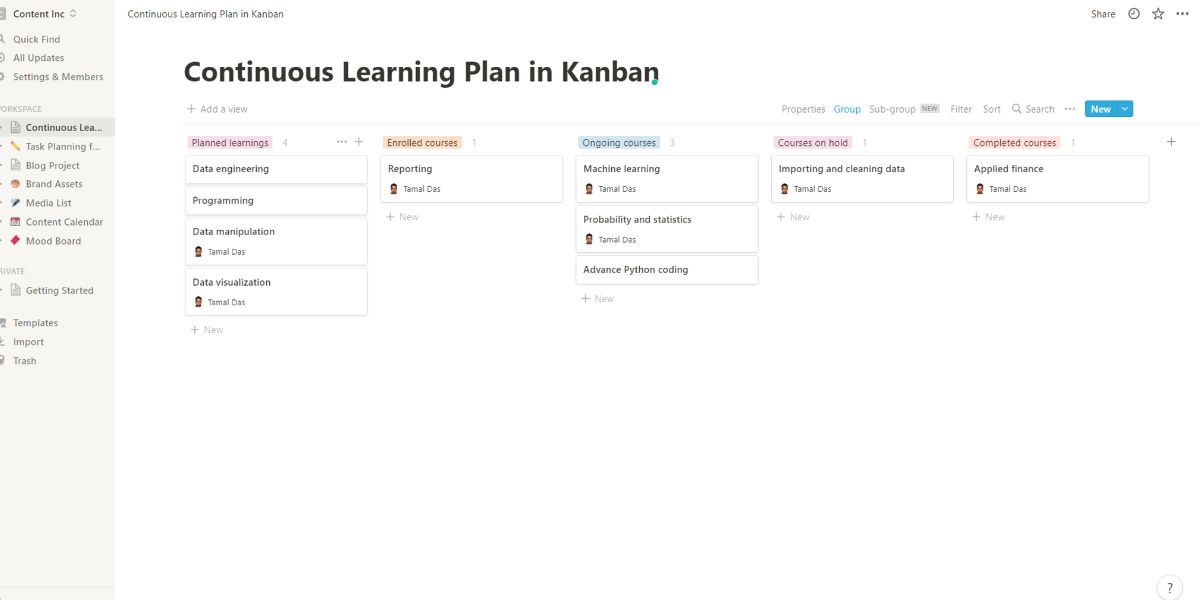You must create a career plan and follow that strictly to achieve your career goals. Kanban board is the perfect tool to create an actionable career plan. Your career development planning should include basic steps like Self-Assessment, Career Exploration, Primary Career Targeting, and so on.
In this article, you’ll see how to create separate kanban boards for each step of successful career development planning. While it’s easy to use an online app, these methods are also suitable for a physical kanban board.
1. Self-Assessment in Kanban
You can effortlessly self-assess yourself using a kanban board. In this tutorial, all kanban boards are from Notion. In a self-assessment kanban board, you might want to add Skills, Values, and Interests as the first three groups.
You can also include other groups like Not Started, In Progress, and Completed. Create new pages by identifying your core competencies in the first three groups. You might want to refer to the above image to understand which items to include.
The main purpose of self-assessment is to determine what career path to take. For example, if you like helping people, customer service could be a good fit for you. Secondly, outlining your capabilities will also help you improve your skills, values, and interests.
You can choose some cards from the first three groups for improvement. Then move them to other groups depending on whether you’re working on the item or complete. Inside each card, you can also add various properties like start date, end date, URL, files, and so on.
2. Career Exploration in Kanban
Exploring the appropriate career after assessing yourself is the next step in career planning. There is no other great tool than an online kanban board to plan this step. You can write down the information you collect on possible career options on a kanban board.
You may start with five groups, namely Reading career prospectus, Talking to people, Getting field experiences, Signing-up for key courses, and Internships. For each career possibility, create individual tasks with properties like Working conditions, Location of work, Earnings, and so on.
You can move careers between the groups, depending on the research phase. Finally, the items you move to the Internships group become the creamy layer of career possibilities.
3. Targeting a Primary Career in Kanban
It’s quite easy to scrap some of the career possibilities if they are inappropriate or inferior. However, it’s truly challenging to pick the right item from the remaining creamy layer of career choices. The previous kanban board should clearly show which career options are on the shortlist.
You need to move each shortlisted career through five groups in this kanban board. These groups are: Defining a decision, Choices for the decision, Collecting data on options, Evaluate potential outcomes, and Selecting the appropriate career.
Write down the data for each career on the task page. You’ll move from one career to the next group depending on these data. Once a career moves to the fifth group, you’ve got the career that you’ll prefer the most.
4. Marketing Yourself in Kanban
Marketing yourself is a vital step in career plan development. You need to market your skills to get the best possible job for the career option that you prefer. Instead of applying for some average job posts, market yourself to know better open positions and also connect with people who can help.
The marketing plan for career planning in a kanban board is quite simpler than the actual tasks. Your kanban board should have groups like Marketing methods, Waiting, In progress, Submitted, and Reviewing replies.
You need to write down a couple of marketing methods to expand your network and reach high-quality employers or clients. Then, elaborate each marketing strategy with specific properties like start date, end date, bulleted lists, and so on.
5. Interview Management in Kanban
You can effortlessly manage upcoming interviews, schedule interviews, and archive past interviews using a kanban board. If you’re a visual learner, kanban is a perfect choice. Moreover, creating and managing a kanban board online is effortless and intuitive.
You can start a kanban board for interviews by adding basic groups like Potential job interviews, Online interviews, On-site interviews, Applications submitted, First round, Second round, Declined, Selected, Received offer letter, and so on.
You can also write down more data about the items using properties like start date, end date, applied date, bulleted lists, and many more.
6. Career Management in Kanban
You might have got the job as per your career plan by now. However, your career planning doesn’t end here. Career planning is a continuous process. While engaged in a full-time career, you must look for avenues to upgrade your role, position, and salary within the industry.
An online kanban board is a perfect tool that can help you manage your career with visual boards and minimal time investments. As a part of career growth outside the full-time commitment, you can start gig work, voluntary projects, one-time projects, portfolio projects, and so on.
Thus, the kanban board should have a few groups like Potential side gigs, Project contract signed, Ongoing project, Pending project, Project on hold, and Completed. Don’t forget to include tasks, files, work outlines, etc., into each project.
7. Continuous Learning Plan in Kanban
You can manage all planned learnings during your career planning through a kanban board. This tool is the most cost-effective and time-efficient when compared with online or offline methods.
Kanban board provides you with a dashboard-like view of all the learning sessions you have signed up for and their status. For this purpose, creating a few simple kanban board groups will accomplish the task.
For example, you can include groups like Planned learnings, Enrolled courses, Ongoing courses, Courses on hold, and Completed courses. For detailed course content and learning plan, you can outline respective data inside each task.
Career Planning Made Organized and Efficient
Career planning is a never-ending process that you must continue throughout your lifetime. After graduating from college to a full-time job and after retiring, you need to plan your career.
If you follow the above-mentioned kanban board methods of career planning, you can organize tasks more efficiently and track their progress. You can create a database out of your tasks and comments on such a kanban board for the future. This database should help you plan for the next move in your career.


